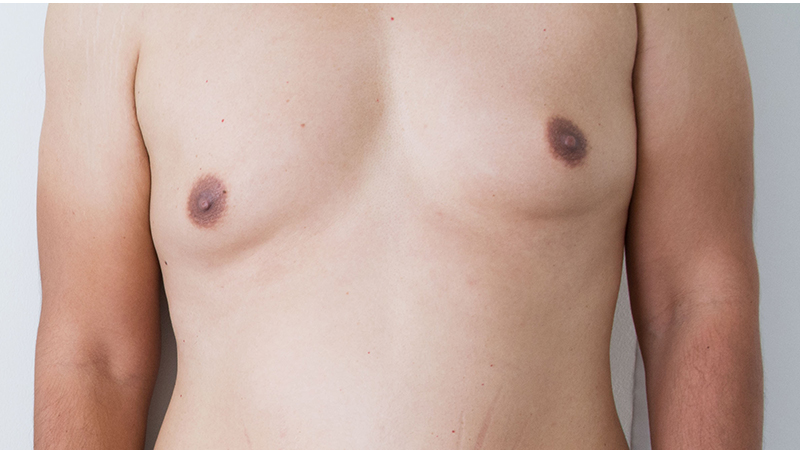
It’s great to get your body the way you want it, even if that means some nip and tuck. But there’s nothing worse than spending money and ending up with an unsatisfactory result or even more issues.
Gynecomastia – the enlargement or overdevelopment of breast tissue in boys and men – is on the rise, which means more male breast reduction surgery is taking place. But along with that is an increase in botched gynecomastia surgery. DR IVAN PUAH of Amaris B. Clinic has been performing this procedure for over 15 years, so we asked him more about it and what kind of things can go wrong.
The pros and cons of gynecomastia surgery
Psychologically, the impact of gynecomastia is huge. It can cause embarrassment and a decline in confidence that leads to anxiety.
For men wanting to remove glandular breast tissue and excess fat from the chest, gynecomastia surgery offers a permanent solution. Aesthetically, it improves your chest contour and gives you a stronger sense of masculinity but also a relief from pain and discomfort for some.
But, in rare cases, crater deformities and other issues may arise through botched gynecomastia surgery or male breast reduction surgery.
Why does botched gynecomastia surgery happen?
Gynecomastia surgery, like any form of surgery, has its risks and complications. These include haematoma, skin contour irregularities and breast asymmetry. According to statistics, fewer than 5% of patients who have had male breast reduction surgery require revision (corrective) surgery.
However, my observation over the years has been that the percentage is higher than those stats suggest. This is likely due to inexperienced and untrained doctors using an inappropriate surgical approach for the patient’s unique condition. Other causes include the use of non-invasive machines such as in fat-freezing procedures to treat this medical condition, which can result in Paradoxical Adipose Hyperplasia (PAH), a rare but serious side effect. Botched gynecomastia surgery can also arise due to inadequate communication between doctor and patient.
Gynecomastia surgery is not simply excess glandular or fat tissue removal. The surgical technique, the placement of incisions, and the experience, aesthetic sense and skills of the doctor all play a critical part in achieving the end results for patients. Ultimately, the doctor should aim not only to remove tissues that are causing physical discomfort but also to create a contoured chest, which will improve self-esteem.
When might revision surgery be necessary?
Gynecomastia revision surgery is a secondary procedure for men who have undergone the initial male breast reduction surgery but are facing issues such as the following:
- insufficient glandular tissue being removed;
- fat tissue being removed but the glands being left behind; and
- crater deformity, where too much tissue removal is carried out beneath the nipple-areola.
Gynecomastia revision surgery is more challenging, time-consuming and complex as each case will require meticulous attention to rectify the damage from the initial surgery. This can include fibrotic scar tissues, tissue adhesions, indentations and more.
Depending on the issues that the patient presents, the gynecomastia revision surgery may entail glandular tissue removal, liposuction, chest sculpting or fat grafting to correct and improve the results of the original surgery.
Who is a suitable candidate for gynecomastia revision surgery?

After six months, if you’re unsatisfied with the results, you can look at revision surgery if you’re physically healthy and don’t have medical conditions that will affect the healing process.
You should also be committed to the post-op instructions. These include wearing a compression garment continually for up to six to eight weeks. In addition, it’s important to be emotionally prepared, and aware of what can and cannot be achieved, and the potential complications and benefits.
Finally, you should accept that the pain, bruising and swelling experienced in the initial surgery will be similar with the revision surgery.
At Amaris B. Clinic, gynecomastia surgery is carried out at an accredited Day Surgery, where Dr Ivan Puah works with a team of anaesthesiologists and trained surgical personnel. The team’s priority is always the wellbeing of patients, including after-care. Also, from the start there’s a focus on open communication so both sides are clear on the expected results.
If you’re unhappy with recent surgery or have questions about enlarged male breasts, set up a consultation with Dr Puah.
Written in conjunction with Amaris B. Clinic
6536 4211 | customer@amaris-b.com
instagram.com/AmarisBClinic | amaris-b.com




